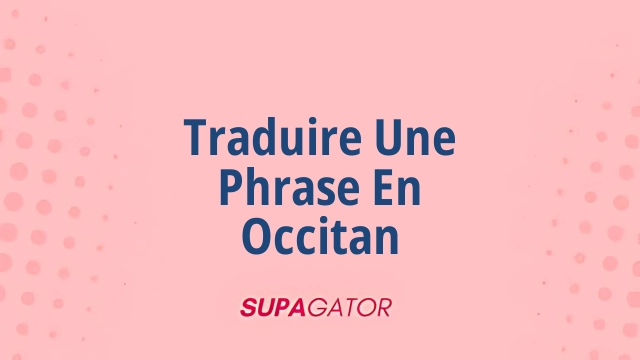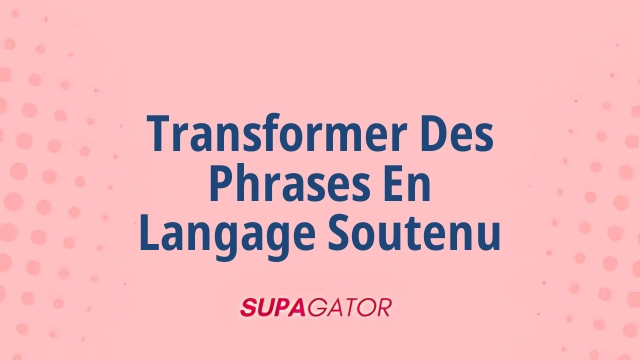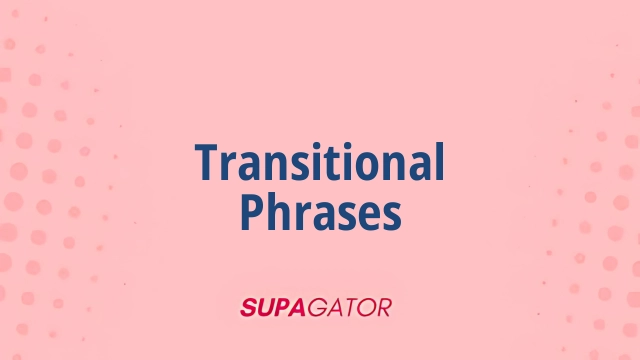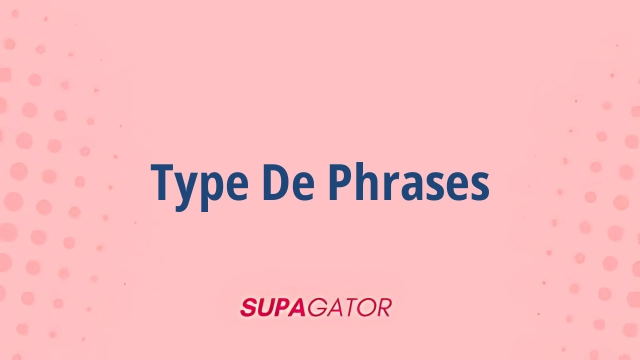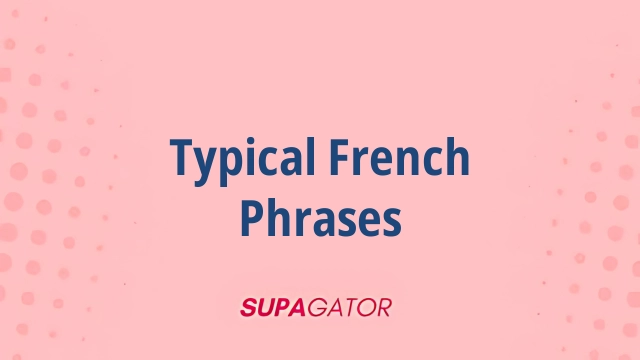Découvrir comment traduire des phrases en anglais peut révolutionner la manière dont vous communiquez à l’international, que ce soit pour le travail, les voyages ou les études. Dans un monde de plus en plus connecté, maîtriser l’art de la traduction devient essentiel.
Grâce à cet article, vous allez apprendre à naviguer dans les subtilités de la langue anglaise, en transformant des phrases complexes en messages clairs et compréhensibles. Que vous soyez débutant ou déjà bien initié, explorez les techniques pour une traduction précise et efficace et améliorez vos compétences linguistiques dès aujourd’hui.

Traduit Des Phrases En Anglais
- 1. Bonjour le monde
- 2. Comment ça va?
- 3. Je m’appelle jean
- 4. J’aime lire des livres
- 5. Nous allons au cinéma
- 6. Il fait beau aujourd’hui
- 7. J’ai deux frères
- 8. Elle travaille dans une banque
- 9. C’est une bonne idée
- 10. Je parle un peu français
- 11. Où est la gare?
- 12. Pouvez-vous m’aider?
- 13. J’ai besoin d’information
- 14. Il est déjà tard
- 15. Nous sommes en vacances
- 16. Elle aime cuisiner
- 17. J’habite à paris
- 18. C’est trop cher
- 19. Je suis désolé
- 20. Quelle heure est-il?
- 21. Il est important de comprendre
- 22. Je voudrais un café
- 23. Tu as faim?
- 24. Nous avons un problème
- 25. C’est une belle journée
- 26. Ils sont partis hier
- 27. Le chien est dans le jardin
- 28. Je suis fatigué
- 29. Peux-tu répéter?
- 30. J’ai oublié mon portefeuille
- 31. Elle chante très bien
- 32. Nous avons une réunion
- 33. Le train arrive à 15h
- 34. C’est une question difficile
- 35. Je dois partir maintenant
- 36. Il pleut beaucoup
- 37. Je l’ai vu hier
- 38. Ouvrez la fenêtre, s’il vous plaît
- 39. Je vais à la plage
- 40. Tu es prêt?
- 41. La porte est fermée
- 42. Merci beaucoup
- 43. Il n’y a plus de pain
- 44. C’est mon livre préféré
- 45. Elle est à l’école
- 46. Je suis en retard
- 47. Où est la salle de bain?
- 48. Ils sont tous partis
- 49. J’ai oublié la date
- 50. Elle est très intelligente
- 51. Le soleil brille
- 52. C’était un bon film
- 53. Nous devons étudier
- 54. Je suis occupé maintenant
- 55. As-tu un stylo?
- 56. C’était délicieux
- 57. Le magasin est fermé
- 58. Je prends le bus
- 59. C’est une longue histoire
- 60. Je ne comprends pas
- 61. Elle est très gentille
- 62. Que veux-tu?
- 63. Je suis d’accord
- 64. Il y a beaucoup à faire
- 65. Nous sommes perdus
- 66. C’est magnifique!
- 67. Il y a un problème
- 68. Nous sommes arrivés
- 69. Elle a un joli sourire
- 70. Je dois appeler ma mère
- 71. Il est temps de partir
- 72. Elle aime les fleurs
- 73. Je le connais bien
- 74. Ils jouent au foot
- 75. Ne t’inquiète pas
- 76. Il a perdu ses clés
- 77. Nous sommes presque là
- 78. Je te remercie
- 79. C’est dommage
- 80. Elle a un nouveau chat
- 81. Nous aimons voyager
- 82. Il est vraiment drôle
- 83. Je vais au marché
- 84. C’est un bon début
- 85. Elle est en colère
- 86. Il est déjà parti
- 87. J’ai perdu mon téléphone
- 88. Nous avons des invités
- 89. Elle est très occupée
- 90. Il aime nager
- 91. Elle veut apprendre
- 92. Nous allons bientôt
- 93. Je suis prêt
- 94. C’est compliqué
Importance Of Accurate Translation In Professional Settings
Accurate translation in professional settings is crucial for a number of reasons, each impacting the effectiveness, efficiency, and reputation of an organization. Here are some of the key reasons for its importance:
Communication Clarity: Accurate translation ensures that the intended message is conveyed precisely without misunderstandings. This is particularly important in legal, medical, and technical fields where inaccuracies can lead to significant consequences.
Cultural Sensitivity: Professional translations consider cultural nuances and context, thereby preventing offense and miscommunication that can arise from direct translations. This sensitivity helps in building stronger relationships with clients and partners from different cultural backgrounds.
Legal Compliance: Many industries require documentation to meet certain regulatory standards. Accurate translations ensure these documents comply with local laws and regulations, mitigating the risk of legal repercussions.
Brand Reputation: Poor translations can harm a company’s image, suggesting a lack of professionalism or attention to detail. Accurate translations contribute to a positive reputation and build trust with clients and stakeholders.
Efficiency: Misunderstandings from inaccurate translations can lead to errors that require time and resources to correct. Ensuring accurate translations from the outset enhances operational efficiency.
Competitiveness: In global markets, businesses must communicate effectively with diverse audiences. Accurate translation can be a competitive advantage, facilitating market entry and expansion.
Safety: In sectors like healthcare and engineering, accurate translations are critical for safety. Misinterpretations can lead to accidents and health risks, so precision is essential.
Professional Image: High-quality translations reflect professionalism and show a commitment to excellence. This is crucial in establishing credibility and respect in the international arena.
Improved Customer Experience: Providing materials in a customer’s native language enhances user experience and satisfaction. It also indicates that a company values its customers and is committed to meeting their needs.
In summary, accurate translation is not just about converting text from one language to another; it’s about conveying the correct meaning, context, and intent to ensure effective communication and foster positive interactions in professional settings.
Common Mistakes In English To French Translation
Translating from English to French can be challenging due to differences in grammar, vocabulary, and cultural nuances. Here are some common mistakes often made during this process:
Literal Translation: Translating word-for-word can result in awkward or incorrect sentences. For example, « I’m full » in French should be « J’ai bien mangé » instead of « Je suis plein, » which suggests pregnancy.
False Friends (Faux Amis): Words that look similar in both languages but have different meanings. For example, « actuellement » means ‘currently,’ not ‘actually.’
Gender Agreement: French nouns have genders, and adjectives must agree in gender and number with the nouns they modify. A common mistake is mismatching them.
Verb Tenses: French uses different tenses and moods than English, such as the subjunctive. One-sided translations often ignore these nuances.
Prepositions: The use of prepositions in French can differ from English, leading to errors. For example, « interested in » is « intéressé par » not « intéressé en. »
Omission of Articles: French often requires definite or indefinite articles where English might omit them, and vice versa. Translating « I’m vegetarian » to French should involve an article, as in « Je suis végétarien. »
Politeness and Formality: French distinguishes between ‘tu’ and ‘vous’ for ‘you,’ based on formality. Misusing them can be disrespectful or overly formal.
Idiomatic Expressions: Direct translations of idioms often don’t work. For instance, “it’s raining cats and dogs” translates to “il pleut des cordes,” not “il pleut des chats et des chiens.”
Negation: French negation often requires a two-part structure (ne…pas), which can be omitted by learners.
Pronoun Placement: French has stricter rules about pronoun placement compared to English, especially with reflexive verbs and object pronouns.
To improve translation accuracy, it’s essential to have a deep understanding of both languages, their grammatical structures, and the cultural context. Practice and exposure to both languages in real-world contexts will also help.
Tools And Resources For French-English Translation
Translating between French and English can be made easier with a variety of tools and resources. Here are some options you might consider:
- Online Translation Platforms:
- Google Translate: Offers quick translations and supports audio, text, and image inputs.
- DeepL Translator: Known for providing more nuanced and contextually accurate translations than some competitors.
Microsoft Translator: Offers text, conversation, and image translations.
Translation Software:
- SDL Trados Studio: A comprehensive CAT (Computer-Assisted Translation) tool used by professional translators.
- MemoQ: Another popular CAT tool that offers collaboration features and supports various file formats.
Wordfast: Offers a range of translation solutions including Wordfast Anywhere, a free cloud-based CAT tool.
Dictionaries and Glossaries:
- Larousse: Offers online dictionaries for both English and French with translations and definitions.
- Collins English-French Dictionary: Provides detailed translations and language resources.
TERMIUM Plus: A Canadian government linguistic tool with a focus on official terminology.
Mobile Apps:
- iTranslate: Offers translations and phrasebooks with offline capabilities.
- SayHi: Focuses on voice translation with real-time conversation features.
TripLingo: Provides translations and cultural information, useful for travelers.
Language Learning Platforms:
- Duolingo: A popular app for learning languages that can help improve your translation skills with French practice.
Babbel: Offers French courses with a focus on grammar and vocabulary, useful for deeper understanding.
Professional Translation Services:
- ProZ: An online community of translators offering freelance translation services.
TransPerfect: Provides professional translation services across multiple industries.
Translation Communities and Forums:
- WordReference Forums: A platform where you can ask questions and discuss translation challenges with others.
Reddit’s translator community: Offers insights, help, and discussions on translation and language nuances.
Educational Resources:
- Coursera and edX: Offer courses on translation studies which can improve your understanding of translation theory and practice.
- Books like « The Translator’s Invisibility » by Lawrence Venuti: Provide deeper insights into the ethics and philosophies of translation.
These tools and resources cater to different needs, whether you are a casual user, a language learner, or a professional translator.
Cultural Nuances In English To French Translation
Translating from English to French, or between any two languages, involves more than just converting words; it requires an understanding of cultural nuances to ensure the translation is accurate and culturally appropriate. Here are some key cultural nuances to consider when translating between English and French:
- Formal and Informal Address:
English often uses « you » for all second-person references, while French distinguishes between « tu » (informal) and « vous » (formal/plural). Choosing the correct form depends on the relationship between the speakers, the context, and the level of formality.
Idioms and Expressions:
English and French both have idioms that don’t translate literally. For example, the English expression « when pigs fly » is equivalent to the French « quand les poules auront des dents » (when hens have teeth).
Humor:
Humor can vary widely between cultures. Sarcasm, irony, and puns might not translate directly because they rely heavily on linguistic and cultural context.
Politeness and Directness:
French communication can be more formal and polite, especially in writing. French speakers might also appreciate more elaborate expressions of gratitude and closings in correspondence compared to their English counterparts.
Gendered Language:
French is a gendered language, meaning nouns have genders, affecting adjectives and articles. This creates challenges in ensuring gender agreement in translation.
Tense and Aspect:
The use of tenses may differ. For instance, the French « passé composé » might be used where English uses simple past or present perfect, depending on the context.
Cultural References:
Terms that reference cultural artifacts, events, or institutions might need additional explanation or adaptation. For instance, a reference to Thanksgiving in an English text might require an explanation for a French audience unfamiliar with the holiday.
Taboos and Sensitivities:
Certain topics might be more sensitive in one culture than another, requiring translation that respects cultural sensitivities regarding gender, religion, politics, etc.
Measurements and Formats:
Conversion of measurements, such as feet to meters, or understanding differences in date formats (MM/DD/YY vs. DD/MM/YY) is essential for clarity and accuracy.
Changes in Tone:
- The tone used in English texts might need to be adjusted to fit French cultural expectations, where a more formal or indirect tone is frequently the norm in professional settings.
Developing sensitivity to these nuances takes time and exposure to both cultures. A translator must generally have a deep understanding of both the source and target cultures, not just the languages, to provide a translation that faithfully conveys the intended meaning and cultural context.
Tips For Improving Your Translation Skills
Improving your translation skills is a valuable endeavor, whether you’re a professional translator or someone looking to enhance language proficiency. Here are several tips to help you improve:
- Master Both Languages:
Deepen your understanding of both the source and target languages, focusing on grammar, vocabulary, idiomatic expressions, and cultural nuances.
Expand Your Vocabulary:
Make a habit of learning new words and phrases daily. Use flashcards, apps, or language learning tools to enhance retention.
Read Extensively:
Read a wide variety of texts in both languages, including literature, news, and technical documents, to familiarize yourself with different styles and terminologies.
Practice Regularly:
Translate texts regularly to keep your skills sharp. Start with simpler texts and gradually move on to more complex materials.
Review and Edit Work:
Revisit your translations after a break to edit and improve them. It’s often easier to spot errors and awkward phrasing with fresh eyes.
Learn About the Subject Matter:
Developing expertise in specific areas (like legal, medical, or technical fields) enhances your ability to produce accurate translations.
Use Technology Wisely:
Employ translation tools and software, but don’t rely on them completely. Use them as aids and always verify their output.
Seek Feedback:
Share your work with native speakers or more experienced translators. Constructive criticism is invaluable for improvement.
Study Professional Translations:
Compare your work with translations done by professionals to identify differences and learn from their techniques and strategies.
Work on Cultural Competence:
- Understand the cultural context of both languages to make translations more relevant and meaningful to the target audience.
Attend Workshops and Courses:
- Participate in translation workshops, seminars, or online courses to learn new techniques and stay updated with industry trends.
Build a Glossary:
- Maintain a personal glossary of terms and phrases that you frequently encounter in your translations to ensure consistency.
Network with Other Translators:
- Join translation groups or forums to exchange tips, discuss challenges, and gain insights from peers.
Stay Patient and Open-Minded:
- Translation is a skill that takes time to develop. Be patient with yourself and remain open to learning and adapting new strategies.
Consistent practice, coupled with a willingness to learn and adapt, is key to becoming a proficient and well-rounded translator.
Foire aux questions
Comment puis-je traduit des phrases en anglais efficacement ?
Pour traduit des phrases en anglais efficacement, il est important de bien comprendre le contexte de la phrase originale. Utilisez des outils en ligne fiables ou consultez un traducteur professionnel pour garantir la précision de la traduction.
Quels outils en ligne recommandés pour traduit des phrases en anglais ?
Il existe plusieurs outils en ligne comme Google Traduction, DeepL ou Reverso qui peuvent aider à traduit des phrases en anglais. N’oubliez pas de vérifier les traductions pour assurer une bonne qualité.
Pourquoi est-il parfois difficile de traduit des phrases en anglais ?
Traduit des phrases en anglais peut être difficile à cause des différences culturelles, des expressions idiomatiques, ou des doubles sens dans la langue source.
Une bonne compréhension des deux langues aide à surmonter ces défis.
Comment améliorer mes compétences pour traduit des phrases en anglais ?
Pour améliorer vos compétences, pratiquez régulièrement, étudiez la grammaire et le vocabulaire anglais, et exposez-vous à des contenus en anglais comme des livres, des films ou des podcasts.
Cela enrichira votre connaissance de la langue et facilitera la traduction.


